Diseases of milkweed and their treatment
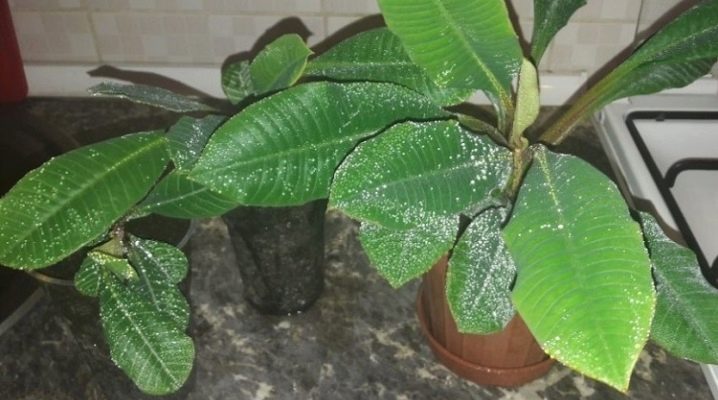
Euphorbia, known as euphorbia, is such an unpretentious plant that it grows in any climatic zone. Like most flowers, the plant is not immune to various diseases and a number of pests. This article will be about how to detect a disease in time and cure a deciduous crop.

Peculiarities
Most often, spurge can be found on the windowsills of apartments, houses or official institutions. The plant feels good both in a lighted room and in an area of average light intensity. It is generally accepted that this plant is one of the first in the world by its genus, since it has up to 2 thousand species. It can grow in the form of a grass or shrub, as well as in the form of a small tree. A few hundred years ago, the sap of the plant was used in many fields of medicine. They could be healed and harmed at the same time. The patient received severe poisoning at the slightest mistake of the aesculapius.
Lovers of indoor plants are advised to grow euphorbia, provided that there are no preschool and primary school children in the house. If you have pets, then the flower should grow in a room where access to pets is closed. In its leaves, the culture has resin, rubber. There is also milky juice in them.
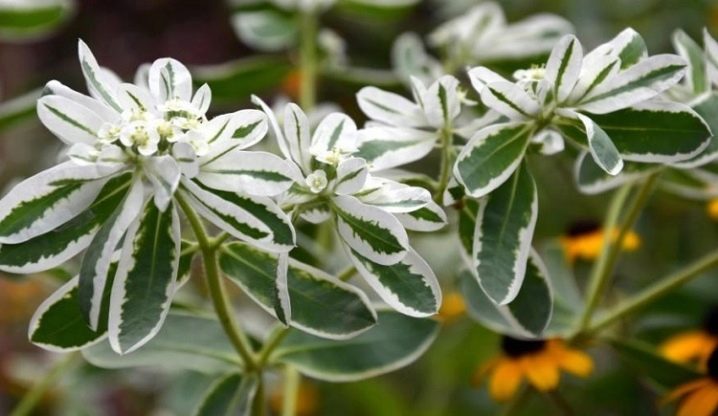
The beneficial properties of a flower are expressed in its ability to have an anti-inflammatory and analgesic effect on the human body. The plant is a urine and diaphoretic. Milkweed juice actively fights leukemia, therefore the roots of the plant, its leaves and juice from them are used as raw materials for pharmaceutical tinctures. They, in turn, treat stomach ailments as well as skin ailments.
It is surprising that, having poisonous elements in the juice, the plant is still susceptible to diseases and pest attacks.

Diseases
Multi-flowered or triangular, cypress, edged, ribbed and many other types of indoor milkweed flower very often suffer due to the fact that the leaves have fallen off, the trunk turns yellow. This most often happens after the plant is transplanted. Why does this happen and what to do in such a situation? This question is asked by a large number of gardeners.
The development of diseases is mainly influenced by not quite proper care of the milkweed. So, with a lack of lighting, the culture quickly sheds its leaves. If the flower has dropped its leaves, then you overdid it with watering. The consequence of improper care is the formation of viral infections or a fungus in the plant.
The most common of them are:
- root, stem and gray rot;
- alternaria and bacteriosis;
- mosaic and powdery mildew.
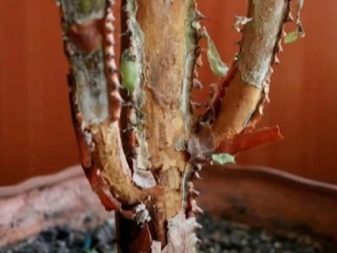
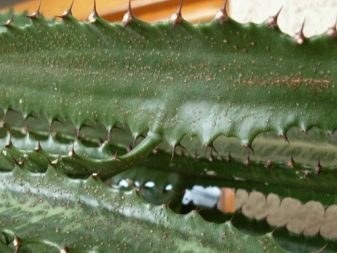
All types of rot are caused by fungal infection. At first, it may appear on the roots, and later the disease will be visible on the stem and leaves. It is expressed in the appearance of spots of dark and gray shades. The leaves from them simply rot, the stem breaks. A similar situation occurs with the roots, they turn into rotted fibers.
This disease occurs as a result of excessive watering of the plant, as well as due to the fact that the flower is in a room where the air temperature and humidity change dramatically. An excess of fertilizers containing nitrogen can also cause this disease. As a fight against flower ailment, a substrate replacement is carried out. They remove the wet one and place the plant in dry soil, and then treat it with the preparations "Previkur" or "Ridomil".
The chemical composition "Skor" or the same "Ridomil Gold", Bordeaux mixture, "Acrobat Mts" are used to treat milkweed damaged by Alternaria. This is a fungal disease. It is expressed in the appearance of dense spots of dark brown or black color on the leaves. They can be small and grow in diameter. The leaf tissue is destroyed under the fungal bloom. The leaves fall, the spurge perishes. To save the plant, it needs to be sprayed with the aforementioned fungicides.
Better, of course, also to replace the soil.
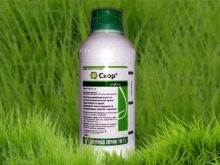
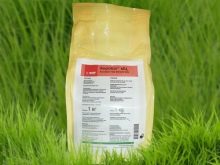

The development of bacteriosis is facilitated by excessive watering of the flower, high humidity or infected seeds (from which the seedling is grown). Rot is formed on the stems and leaves, as if they are wetted with water. The culture grows poorly and stops blooming. The damaged areas are filled with a thick and cloudy liquid with a pungent unpleasant odor. The virus does not leave the plant until the very moment of its death.
Excessive nitrogen content in the substrate and air humidity accompany the development of bacteria. When only the roots began to rot, and the stem and leaves look quite viable, then it makes sense to take measures to save the plant. First you need to remove all rotten areas, then water the plant with Bordeaux mixture, and then transplant into dry soil. The pot in which the flower was located before must be well disinfected and taken to the back room.
Better to plant the spurge in a new container.


If a fluffy coating appears on the leaves of your room milkweed, then this also signals the presence of a fungus. Leaf tissues dry out under such a coating. The fungus spreads very quickly from one plant to another, and if measures are not taken in time to eliminate it, then all plants near the milkweed may die. Powdery mildew is treated with antifungal drugs. It can be Topaz, Fundazim, Quadris and other means.
There is no less insidious disease - mosaic. With her, milkweed leaves are covered with a peculiar pattern of spots. Their color is white, yellow, red. To date, there are no chemical preparations that actively fight this plant ailment.
It is recommended to remove the leaves affected by the disease. The cut must be carried out with a tool previously treated with alcohol or an alcohol-containing composition.
If, after the time has passed, the spurge does not begin to recover, the damage to the leaves continues, and you will see that the plant dies, then such a flower is best destroyed.
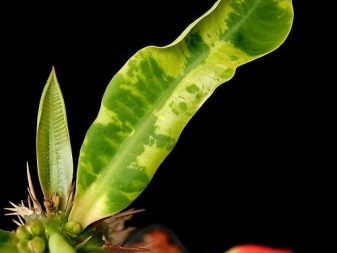
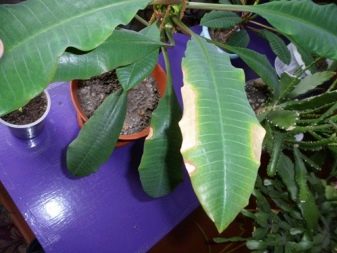
Pests
Very often there is aphid on milkweed. If it appears, then the leaves change, they may even curl, and then they begin to turn yellow. As a result, the plant discards them. As a rule, areas affected by aphids lose their original color, the growth of deciduous crops slows down.
When you spot tiny yellow or green bugs, try to collect them as soon as possible. After that, it is recommended to immediately process (spray) the euphorbia with one of the drugs actively fighting the pest. For these cases, it is better to use "Aktellik", "Fitoverm". It is necessary to perform the procedure in two or three steps with a time interval. The procedure for using the funds is described on the packaging.
Treatment of a plant from attacks of root mealybug and whitefly is carried out by using insecticides. They should be used with extreme caution, since when spraying drugs, there is an effect on the human respiratory system. These drugs include, for example, dichlorvos. Compositions are in the form of emulsions, suspensions, powders. With the whitefly, its larvae reproduce in the lower part of the leaves. When the leaf itself turned yellow, twisted into a tube or opal, an attack began on the plant in the form of white small midges.
The diseased parts of the flower are cut off, and the rest are sprayed.
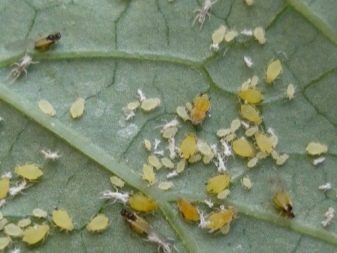

Mealy worm or bug manifests itself in the form of layers, reminiscent of scattered flour. Milkweed roots are primarily susceptible to this disease. As a treatment, the plant is removed from the pot, sprayed with insecticides, and the pot is thoroughly disinfected. Then it is covered with other soil (fresh). The same drug acts on small mosquitoes, often parasitizing the plant. If they are found, the culture is immediately transplanted into a new substrate. Spurge also affects the scale insect. From her attacks, the plant is treated with drugs "Actellic" or "Phosbecid".
Proper care of the milkweed will ensure its continued growth and the absence of diseases or damage by harmful insects. Adequate lighting, soil, air temperature and humidity are the main components for plant health. Among the variety of species, you can always choose the most extraordinary version of a flower for yourself and grow it at home, with minimal knowledge about it.


For information on how to root spurge, see the video below.























































The comment was sent successfully.